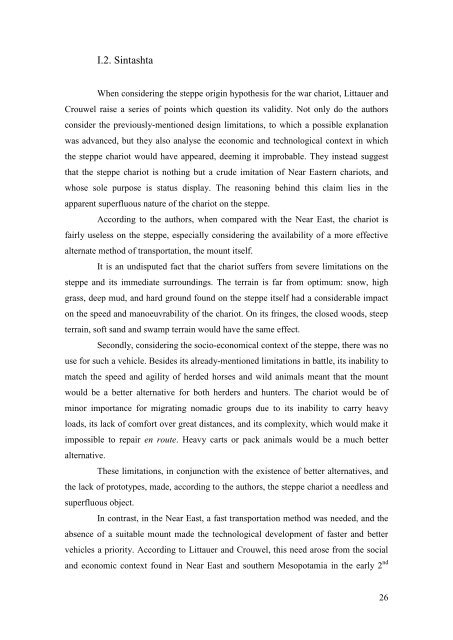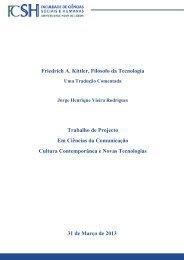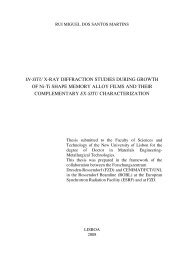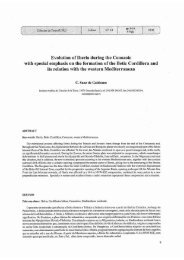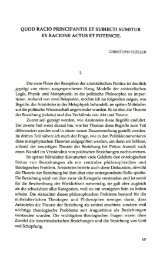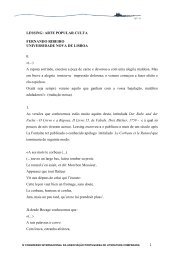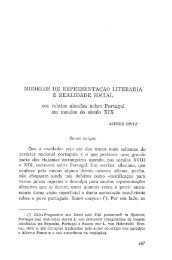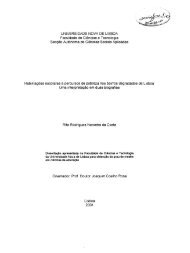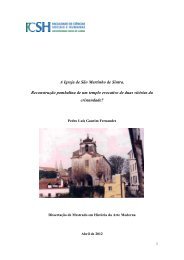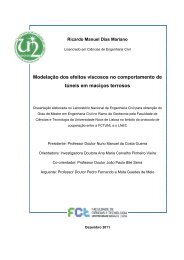Elias Manuel Morgado Pinheiro Dissertação de Mestrado em ...
Elias Manuel Morgado Pinheiro Dissertação de Mestrado em ...
Elias Manuel Morgado Pinheiro Dissertação de Mestrado em ...
Create successful ePaper yourself
Turn your PDF publications into a flip-book with our unique Google optimized e-Paper software.
I.2. Sintashta<br />
When consi<strong>de</strong>ring the steppe origin hypothesis for the war chariot, Littauer and<br />
Crouwel raise a series of points which question its validity. Not only do the authors<br />
consi<strong>de</strong>r the previously-mentioned <strong>de</strong>sign limitations, to which a possible explanation<br />
was advanced, but they also analyse the economic and technological context in which<br />
the steppe chariot would have appeared, <strong>de</strong><strong>em</strong>ing it improbable. They instead suggest<br />
that the steppe chariot is nothing but a cru<strong>de</strong> imitation of Near Eastern chariots, and<br />
whose sole purpose is status display. The reasoning behind this claim lies in the<br />
apparent superfluous nature of the chariot on the steppe.<br />
According to the authors, when compared with the Near East, the chariot is<br />
fairly useless on the steppe, especially consi<strong>de</strong>ring the availability of a more effective<br />
alternate method of transportation, the mount itself.<br />
It is an undisputed fact that the chariot suffers from severe limitations on the<br />
steppe and its immediate surroundings. The terrain is far from optimum: snow, high<br />
grass, <strong>de</strong>ep mud, and hard ground found on the steppe itself had a consi<strong>de</strong>rable impact<br />
on the speed and manoeuvrability of the chariot. On its fringes, the closed woods, steep<br />
terrain, soft sand and swamp terrain would have the same effect.<br />
Secondly, consi<strong>de</strong>ring the socio-economical context of the steppe, there was no<br />
use for such a vehicle. Besi<strong>de</strong>s its already-mentioned limitations in battle, its inability to<br />
match the speed and agility of her<strong>de</strong>d horses and wild animals meant that the mount<br />
would be a better alternative for both her<strong>de</strong>rs and hunters. The chariot would be of<br />
minor importance for migrating nomadic groups due to its inability to carry heavy<br />
loads, its lack of comfort over great distances, and its complexity, which would make it<br />
impossible to repair en route. Heavy carts or pack animals would be a much better<br />
alternative.<br />
These limitations, in conjunction with the existence of better alternatives, and<br />
the lack of prototypes, ma<strong>de</strong>, according to the authors, the steppe chariot a needless and<br />
superfluous object.<br />
In contrast, in the Near East, a fast transportation method was nee<strong>de</strong>d, and the<br />
absence of a suitable mount ma<strong>de</strong> the technological <strong>de</strong>velopment of faster and better<br />
vehicles a priority. According to Littauer and Crouwel, this need arose from the social<br />
and economic context found in Near East and southern Mesopotamia in the early 2 nd<br />
26


